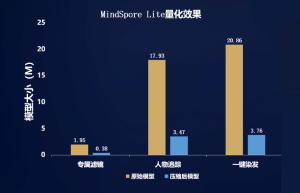Flex 3 Quick Start: Building Custom Components Building Custom Components Using Code Splitting
This article comes from: http://www.airia.cn/FLEX_Directory/building_components_using_code_behind/ The MXML and ActionScript languages have different advantages and disadvantages when creating components. When you create a conformant component, MXML makes it easy to create and place subcomponents. When you modify the behavior of a component, that is, override its methods, you should use ActionScript. Most of the time, when creating components and applications, both MXML and ActionScript are used. Flex provides several ways to use MXML and ActionScript at the same time, including the following: Place ActionScript code declarations in MXML tags, which are used for inline event handling Place ActionScript code in the tag. Use the source attribute of the tag to introduce external ActionScript files. Use MXML to place components and put the ActionScript code in a class definition. This approach is called code separation To connect ActionScript and MXML using code behind, you need to make the ActionScript class a tag for the MXML component. That is, MXML components extend ActionScript classes. For example, to implement a custom AddressForm component (displaying a matching address registration form), you need to do the following:1. Create an ActionScript class called AddressFormClass. You can make this class extend the base Flex class. In this case,…
Reverse a set of strings and enter “sing dance rap basketball”. After reversing, you get “basketball rap dance sing”
class=”markdown_views prism-atom-one-dark”> Reverse a group of strings, for example, enter “sing dance rap basketball” After reversing, you will get such a string “basketball rap dance sing” The idea is as follows: First, convert the entire string Reverse group stringllabteksab par ecnad gnig Then reverse each word in it You can also reverse each word first, and then reverse the entire string The specific code is as follows void Reverse(char* start, char* end){ //Pass the beginning and end pointers and reverse the string char tmp; while (start < end){ tmp = *start; *start = *end; *end = tmp; start++; end–; } } void reversestring(char*src){ int i; char* start = src; char* end; for (i = 0; src[i]; i++){ //Iterate through the array if (src[i] == ' '){ end = src + i – 1;//i is the position of the space, end is the one before the space Reverse(start, end); start = src + i + 1; } } end = src + i – 1; Reverse(start, end); Reverse(src, end); } int main(){ char src[] = "sing dance rap basketball"; reversestring(src); puts(src); system("pause"); return 0; } What needs to be noted here is that in the for loop, the entire array is…

ヒナギク / daisy_ヒナギクヴァ一ジンロスト
class=”markdown_views prism-atom-one-light”> Directory Basic information Panel value (without Tianming bonus) Tian Ming Reward Declaration of Combat (VC) Skills Back to character index Basic information NS(4★) NS(5★) Card Pool (Ver 2.10.50) Card Pool (Ver 2.10.50) — エンマの书(人喰いumaVH) Tian Ming Attribute Weapons Armor Attribute resistance Abnormal resistance NS Ming Land Hammer Wrist guards Water 30% 10% Personality Hammer, like power water, like puppies, purgatory world Panel value (without Tianming bonus) HP MP Wrist strength Durable Lucky Intellectuality Speed Spirit 5★ 3444 413 261 182 161 169 138 190 Tian Ming Rewards 5 15 30 50 75 Wrist strength +5 Intellectual +10 HP+200 Durability +15 Wrist strength +15 105 140 175 215 255 HP+300 Spirit +20 HP+400 Durability +25 Wrist strength +30 Declaration of Combat (VC) VC name Object Type Properties Content Last round Magnification Occurrence Lv3 Purgatory no flower に, see trance れたがおEnd いじゃ! All enemies Hit Place Extra large — [1] — Strengthen Purgatory no flower, see trance れたがおEnd いじゃ! All enemies Hit Place Extra large (certain critical hit) — [1] — エンマの Certificate (wrist strength +5, spirit +5), 真・エンマの Certificate(Wrist +15, Spirit +15) [1] When there are 5 to 6 enemies in total, the multiplier is 1.6. For every 1…
Convert json object to string java_Convert java object to json string
package com.cjonline.foundation.util; import java.lang.reflect.Field; import java.math.BigDecimal; import java.text.SimpleDateFormat; import java.util.Collection; import java.util.Date; public class JsonUtils { /** Default string format */ private static String dateformat = “yyyy-MM-dd hh:mm:ss”; /** * Get date string format * * @return */ public static String getDateformat() { return dateformat; } /** * Set date string format * * @param dateformat */ public void setDateformat(String dateformat) { JsonUtils.dateformat = dateformat; } /** * Get the attribute return type of the entity bean * * @param typeName *Type name * @param fieldValue * Field value * @return */ private static Object toType(Object fieldValue) { Object result = “”; if (fieldValue instanceof String) { String value = (String) fieldValue; if (value.contains(“\r\n”)) { value = value.replaceAll(“\r\n”, “\\\\r\\\\n”); } result = “\”” + value + “\””; } else if (fieldValue instanceof Number) { result = fieldValue; } else if (fieldValue instanceof Boolean) { result = fieldValue; } else if (fieldValue instanceof BigDecimal) { result = fieldValue; } else if (fieldValue instanceof Date) { SimpleDateFormat sdf = new SimpleDateFormat(getDateformat()); result = “\”” + sdf.format(fieldValue) + “\””; } else { result = “\”” + “\””; ; } return result; } /** * is to format a single entity bean into a…

Full-scene AI inference engine MindSpore Lite helps HMS Core video editing service create a smarter editing experience_Full-scene perception engine
class=”markdown_views prism-atom-one-light”> The development of mobile Internet has brought great changes to people’s social and entertainment methods. Emerging cultural forms represented by vlogs, short videos, etc. are being favored by more and more people. At the same time, with the application of AI intelligence, beauty retouching and other functions in image and video editing apps, video editing efficiency and video effects have been greatly improved, and video application scenarios have become more abundant. Current editing products have diverse functions and rich materials, but the development cycle is long and the threshold is high. In order to make the editing software more intelligent, easier to use and improve the efficiency of developers, HMS Core 6 provides developers with a video editing service (Video Editor Kit), providing one-stop video import, editing, rendering, export, media asset management, etc. Video processing capabilities. In addition to supporting complete traditional video editing functions, the video editing service also provides rich AI processing capabilities such as exclusive filters, character tracking, and one-click hair dyeing to assist video creation, bringing users more creative inspiration and creating more intelligent videos. Editing experience. Figure 1. Display of exclusive filters, character tracking, and one-click hair dyeing effects based on AI capabilities…
auto_ptr,scoped_ptr,shared_ptr,weak_ptr
auto_ptr,scoped_ptr,shared_ptr,weak_ptr The use of auto_ptr is very simple. You have ownership of a dynamically allocated object through the constructor, and then it can be used as an object pointer. When the auto_ptr object is destroyed, it will also automatically destroy the object it owns. release can be used to manually give up ownership, and reset can be used to manually destroy internal objects. But in fact, auto_ptr is a class that is quite easy to be misused and is often misused in practice. The reason is due to its object ownership nature and its non-trivial copy behavior. The object ownership of auto_ptr is exclusive! This determines that it is impossible for two auto_ptr objects to have ownership of the same dynamic object at the same time, which also leads to the non-equivalent copy behavior of auto_ptr, which is accompanied by the transfer of object ownership. At the same time, do not put auto_ptr into the container of the standard library, otherwise the unprepared copy behavior of the standard library container (the copy behavior required by the standard library container is equivalent) will lead to errors that are difficult to detect. The special copy behavior of auto_ptr makes it a very…
Conference report: CIKM 2019 Learning and Reasoning on Graph for Recommendation
class=”markdown_views prism-atom-one-dark”> Foreword This is a conference report on graphs and recommendations at CIKM 2019 Link: https ://dl.acm.org/doi/10.1145/3357384.3360317 1. Summary Recommendation methods build predictive models to estimate the likelihood of user-item interactions. Previous models have largely followed a common supervised learning paradigm—treating each interaction as a separate data instance and making predictions based on “silos of information.” This approach ignores the relationships between data instances and may lead to poor performance, especially in sparse cases. In addition, models built on individual data instances have difficulty showing the reasons behind recommendations, making the recommendation process difficult to understand. We will revisit the recommendation problem from the perspective of graph learning. Common recommendation data sources can be organized into graphs, such as user-item interactions (bipartite graphs), social networks, knowledge graphs (heterogeneous graphs), etc. This graph-based organization connects isolated data instances, bringing benefits for developing higher-order connections that encode meaningful patterns for collaborative filtering, content-based filtering, social impact modeling, and knowledge-aware reasoning. Coupled with the recent success of graph neural networks (GNNs), graph-based models have the potential to become the next generation of recommendation system technology. And this article reviews graph-based recommendation learning methods, paying special attention to the latest developments in GNNs…

Talk about optocoupler relay_solid state relay mos output
Talk about optocoupler relay Optocoupler relay is a type of solid state relay. The English name isSolid State Optronics Relay. Generally, relays are mechanical contacts, which rely on current flowing through the coil to turn into magnetic magnets to attract the contacts, thereby controlling the light-on state. The working principle of an optocoupler relay is similar to that of an optocoupler (in fact, it is the same when looking at the equivalent circuit diagram). First of all, we need to understand severalprofessional terms of relays: Form A=normally open contact Form B=Normally closed contact Form C=conversion contact Form E=bistable switch AT=Ampere Turns Parameter used to describe magnetic field sensitivity NC is a normally closed contactnormal close NO is a normally open contactnormal open After understanding the above professional terms, you can also understand the nouns on DataSheet. For example, Panasonic’s AQW610 is used on my C8051F board. On the DataSheet of AQW610, this relay is “Form A&B”, that is, it has both normally open contacts and long-closed contacts. You can take a look at the equivalent circuit diagram of AQW610: There is a normally open contact and a normally closed contact. Optocoupler relay (MOSOutput) Features: >No contacts, so no contacts wear…

Introduction and analysis of SQLite (2)—Design and concept (transaction)_sqlite transaction log design
Written before: This section discusses transactions, which are one of the core technologies of DBMS. In the history of computer science, three scientists have won the ACM Turing Award for their achievements in the field of databases, and one of them, Jim Gray ( (who once worked at Microsoft) won this honor because of his achievements in transaction processing. It is precisely because of him that the OLTP system became popular from then on until today. There is a lot involved in transaction processing technology, and you can easily write a book. Here I will only discuss some principles of SQLite transaction implementation. Compared with large-scale general-purpose DBMS, SQLite’s transaction implementation is relatively simple. These contents may be more theoretical, but they are not difficult and are also the basis for understanding other contents. Good Okay, let’s start the second section—business. 2. Transaction 2.1. Transaction LifecyclesThere are two things worth noting between programs and transactions: (1) Which objects Running under a transaction – this is directly related to the API. (2) The life cycle of the transaction, that is, when it starts, when it ends and when it starts to affect other connections (this is very important for concurrency) –…


